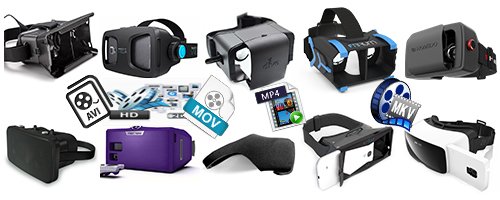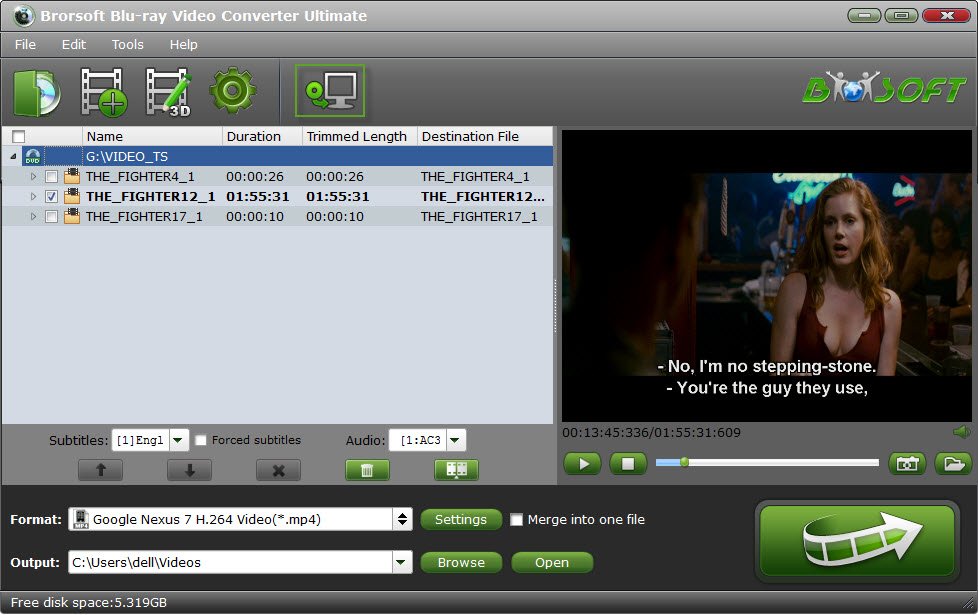
Virtual reality is back baby – 2016 is set to be the year when the likes of Oculus Rift, PlayStation VR and the HTC Vive Pre take VR mainstream. Virtual reality is an immersive experience in which your head movements are tracked in a three-dimensional world, making it ideally suited to games and even movies. With some incredible VR headsets available, you may wonder how to watch 3D movies on VR headsets like Gear VR, VR One, Rift DK2, Google Cardboard, etc.. No worry, this article aims to teach you to view funny videos on VR headsets correctly and easily.
Part 1: Which video formats are supported by VR headsets
To begin with, we should have a good idea about related information of supported video formats by common VR headsets. After careful researching and collecting, below is my summarized details on current popular VR headsets for your reference.
Samsung Gear VR: Powered by technology from Oculus, the Samsung Gear VR was effectively the first VR headset on the market. To use it, you simply grab a Samsung phone, download apps and games from the Oculus store, and clip it into the headset. The original model supported the Note 4, but a new model out this spring is compatible with the Galaxy S6 and Galaxy S6 Edge.
Carl Zeiss VR One: Like Samsung's Galaxy Gear, the Carl Zeiss VR One uses a mobile phone as its display. However, unlike the Galaxy Gear, it supports both the iPhone 6 and the Galaxy S5, although you need to specify which one when you buy.
Oculus Rift: As a teenager, Lucky collected VR tech and was fascinated with making his own headset in his garage. Numerous prototypes and a $2bn Facebook buyout later, Oculus is still the biggest name in VR, thanks to a partnership with Samsung and its own upcoming headset.
HTC Vive: Offers the best virtual reality we've ever experienced. This is thanks to the headset's two 1080 x 1200 screens, the highest resolution displays out there, and the two sensors that hang on your wall to track movement.
Sony Morpheus: Probably has the best chance of becoming a commercial success. First of all, while most VR headsets require a decent PC or the latest mobile phone, Sony's Morpheus just needs a PlayStation 4. Secondly, Sony has some of the best game studios in the world working on games for Morpheus: its London and Tokyo studios have produced some excellent VR demos, and Uncharted developer Naughty Dog could be next.
Microsoft HoloLens:Instead of immersing the player in an entirely computer-generated world, HoloLens augments reality, adding interactive holograms to the space you already inhabit. Microsoft showed demos of people building Minecraft structures on top of their tables, exploring objects such as a motorbikes, or being able to create video feeds on any surface you like.
Razer OSVR: OSVR stands for Open Source Virtual Reality, so everything about the platform is open and freely available. You can even download the 3D files and create your own headset, if you like.
FOVE Eye Tracking VR: FOVE believes that the future of VR control is eye-tracking, and its headset uses tiny cameras to track where you're looking in real-time.
Archos VR Glasses: Archos has been undercutting manufacturers of mobile phones, tablets and portable games consoles for years, so it was only a matter of time before they got into the VR market.
Google Cardboard: A somewhat tongue-in-cheek take on VR, but it makes a great weekend project if you want to see what the fuss is about. You can either download the instructions and make your own headset, or you can buy a kit from a variety of vendors.
Avegant Glyph: The Glyph is compatible with anything that supports external displays, so you can use it with your home consoles or practically any modern mobile phone. You simply slip the band over your eyes, cover your ears with the headphones, and watch or play your content on the retina-quality display.
See whether your video files are supported by VR headsets:
| VR Headset | Gear VR | VR One | DK | Google Cardboard |
| 2D Video Supported | MP4, AVI, and FLV | MP4, MOV | MKV, MP4, AVI, WMV | According to Devices (Generally MP4) |
| 3D Video Supported | 3D SBS Video | 3D SBS Video | 3D SBS Video | According to Devices (3D SBS Video) |
Part 2: How to watch various video formats to VR headset
As you see, not all video formats are accepted by VR headsets, so what if you have some other video files in .mxf, .mpg, .vob, etc, which are excluded in above list? In this case, the professional yet easy-to-use Brorsoft Video Converter Ultimate will be your best choice! Unlike other freeware on the market, it boasts the capacity to support various conversions between virtual all types of video formats like VOB, MKV, AVI, MPG, 3GP, MXF, etc. More than that, you're also authorized to change any 2D/3D DVD/Blu-ray movies to 3D MP4, MOV, MKV, etc for 3D visual experience on Gear VR, VR One, Rift DK2, Google Cardboard, etc, or directly to specific output devices like iPhone, iPad, Samsung Tab for viewing freely, iMovie, Final Cut Pro for editing smoothly or Google Drive, Dropbox for preserving safely. By the way, thanks to its advanced NVIDIA CUDA technology, you'll going to process your conversion at 6X faster speed while retaining excellent output quality.

Related Guides:
Tutorial on enjoying 3D Blu-ray movies on iPhone/Android handset with Zeiss VR One
How to Watch 3D YouTube movies on Samsung Gear VR
How to Watch DVD Films on Google Cardboard (With 3D Effect)
No comments:
Post a Comment